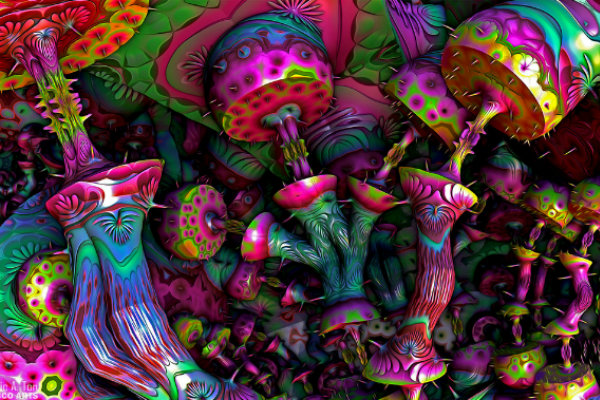In Miami to promote their new book “The Psychedelic Gospels – The Secret History of Hallucinogens in Christianity” at the Miami Book Fair, authors Jerry and Julie Brown visited with us for an eye-opening conversation about hallucinogens, the possible role they historically played in religious rituals, and the psychological health benefits that can be derived from them today when used responsibly.
Throug hout medieval Christianity, works of art illustrated the teachings of the Bible, and much of the artwork and icons in many European and Middle-Eastern churches (stained glass windows) have images of psychoactive mushrooms and plants. Using this visual evidence to document the role of visionary plants in Christianity, “The Psychedelic Gospels” reveals that Christianity may indeed have had a psychedelic history. For example, in some Christian artwork sacred mushrooms appear to be the inspiration for Jesus’s revelation of the Kingdom of Heaven; and sacred mushrooms appear to have grown on the Tree of Knowledge in the Garden of Eden.
hout medieval Christianity, works of art illustrated the teachings of the Bible, and much of the artwork and icons in many European and Middle-Eastern churches (stained glass windows) have images of psychoactive mushrooms and plants. Using this visual evidence to document the role of visionary plants in Christianity, “The Psychedelic Gospels” reveals that Christianity may indeed have had a psychedelic history. For example, in some Christian artwork sacred mushrooms appear to be the inspiration for Jesus’s revelation of the Kingdom of Heaven; and sacred mushrooms appear to have grown on the Tree of Knowledge in the Garden of Eden.
The authors invited us to rethink what we know about the Judeo-Christian lifestyle s in Biblical times and to consider a controversial theory that challenges us to explore these sacred pathways to the divine.
s in Biblical times and to consider a controversial theory that challenges us to explore these sacred pathways to the divine.
Jerry B. Brown, Ph.D., is an educator, anthropologist and activist. From 1972 to 2014 he served as founding professor of anthropology at Florida International University in Miami, where he taught a course on “Hallucinogens and Culture.”
Julie M. Brown, M.A., is an integrative psychotherapist, who conducts research on the role of sacred plants in religion.
on the role of sacred plants in religion.
As an aside, during our conversation Jerry talked about his time as an activist, working with Cesar Chavez to organize the farm workers strikes during the late 1960s (and these retro photos are fun).




